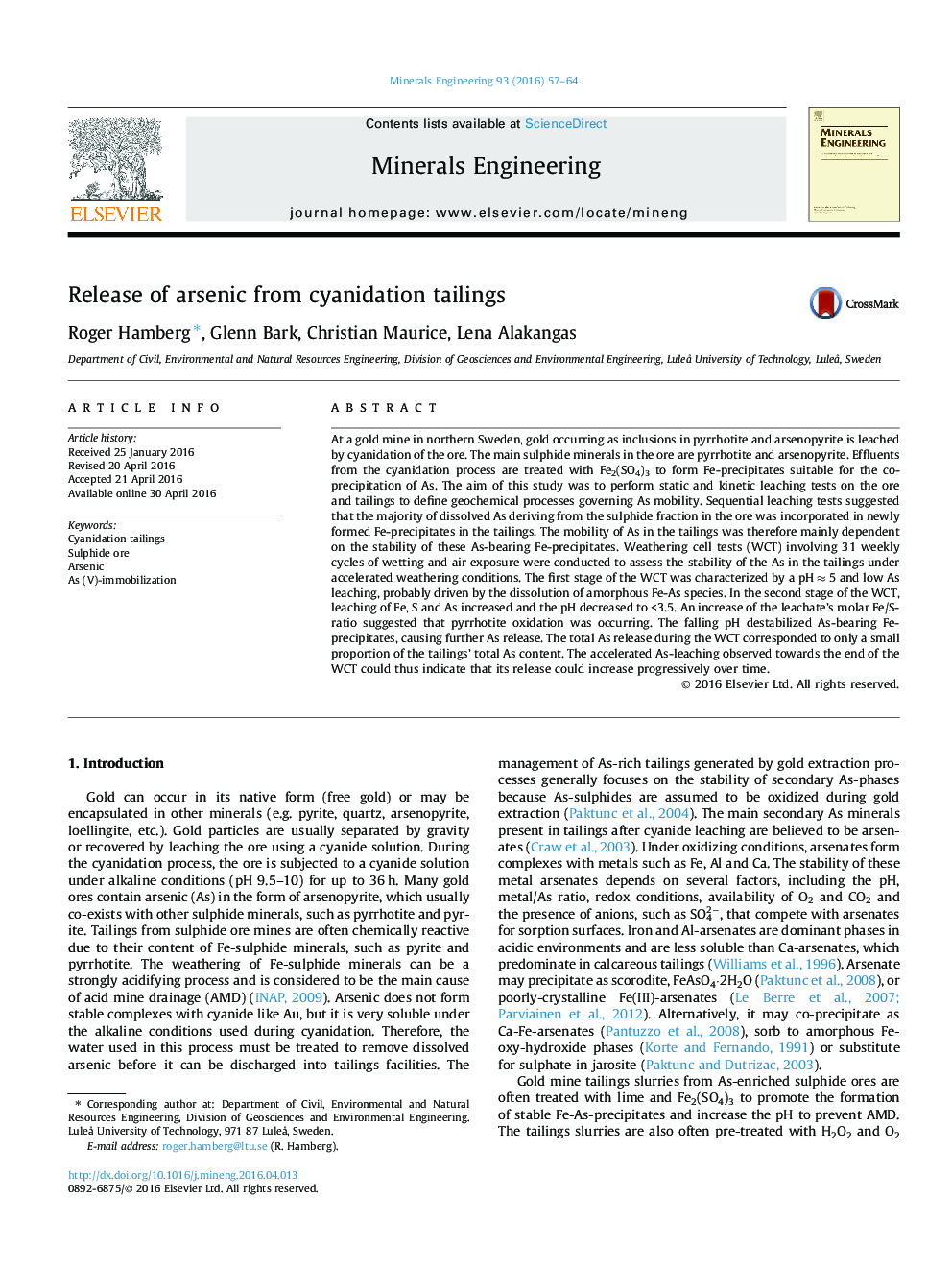| کد مقاله | کد نشریه | سال انتشار | مقاله انگلیسی | نسخه تمام متن |
|---|---|---|---|---|
| 232748 | 465302 | 2016 | 8 صفحه PDF | دانلود رایگان |
• Release of arsenic was closely related to the stability of As-bearing Fe-precipitates.
• Destabilization of As-bearing Fe-precipitates was due to accelerated pyrrhotite oxidation.
• Indications of progressive leaching of As over time.
At a gold mine in northern Sweden, gold occurring as inclusions in pyrrhotite and arsenopyrite is leached by cyanidation of the ore. The main sulphide minerals in the ore are pyrrhotite and arsenopyrite. Effluents from the cyanidation process are treated with Fe2(SO4)3 to form Fe-precipitates suitable for the co-precipitation of As. The aim of this study was to perform static and kinetic leaching tests on the ore and tailings to define geochemical processes governing As mobility. Sequential leaching tests suggested that the majority of dissolved As deriving from the sulphide fraction in the ore was incorporated in newly formed Fe-precipitates in the tailings. The mobility of As in the tailings was therefore mainly dependent on the stability of these As-bearing Fe-precipitates. Weathering cell tests (WCT) involving 31 weekly cycles of wetting and air exposure were conducted to assess the stability of the As in the tailings under accelerated weathering conditions. The first stage of the WCT was characterized by a pH ≈ 5 and low As leaching, probably driven by the dissolution of amorphous Fe-As species. In the second stage of the WCT, leaching of Fe, S and As increased and the pH decreased to <3.5. An increase of the leachate’s molar Fe/S-ratio suggested that pyrrhotite oxidation was occurring. The falling pH destabilized As-bearing Fe-precipitates, causing further As release. The total As release during the WCT corresponded to only a small proportion of the tailings’ total As content. The accelerated As-leaching observed towards the end of the WCT could thus indicate that its release could increase progressively over time.
Journal: Minerals Engineering - Volume 93, July 2016, Pages 57–64
